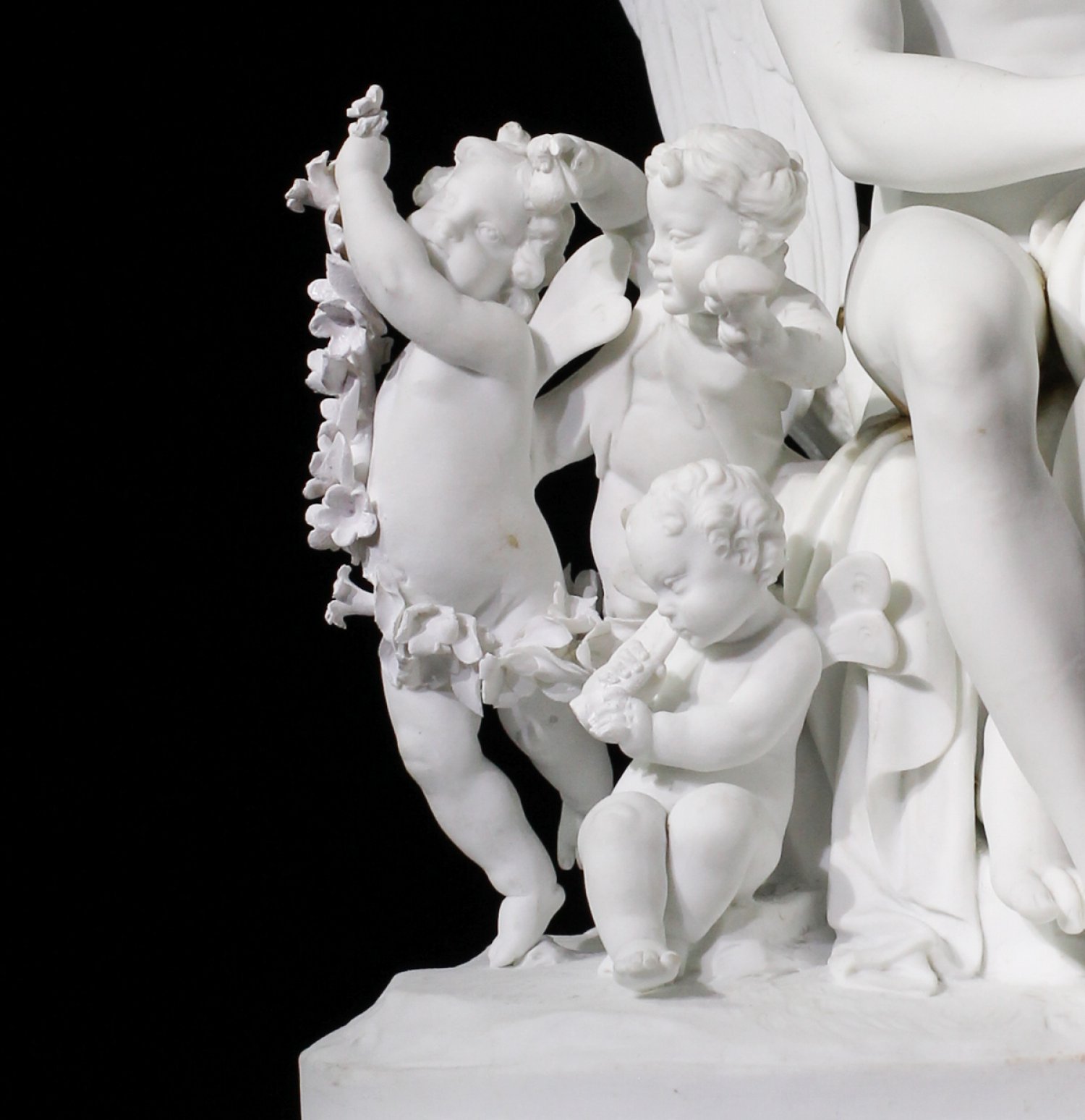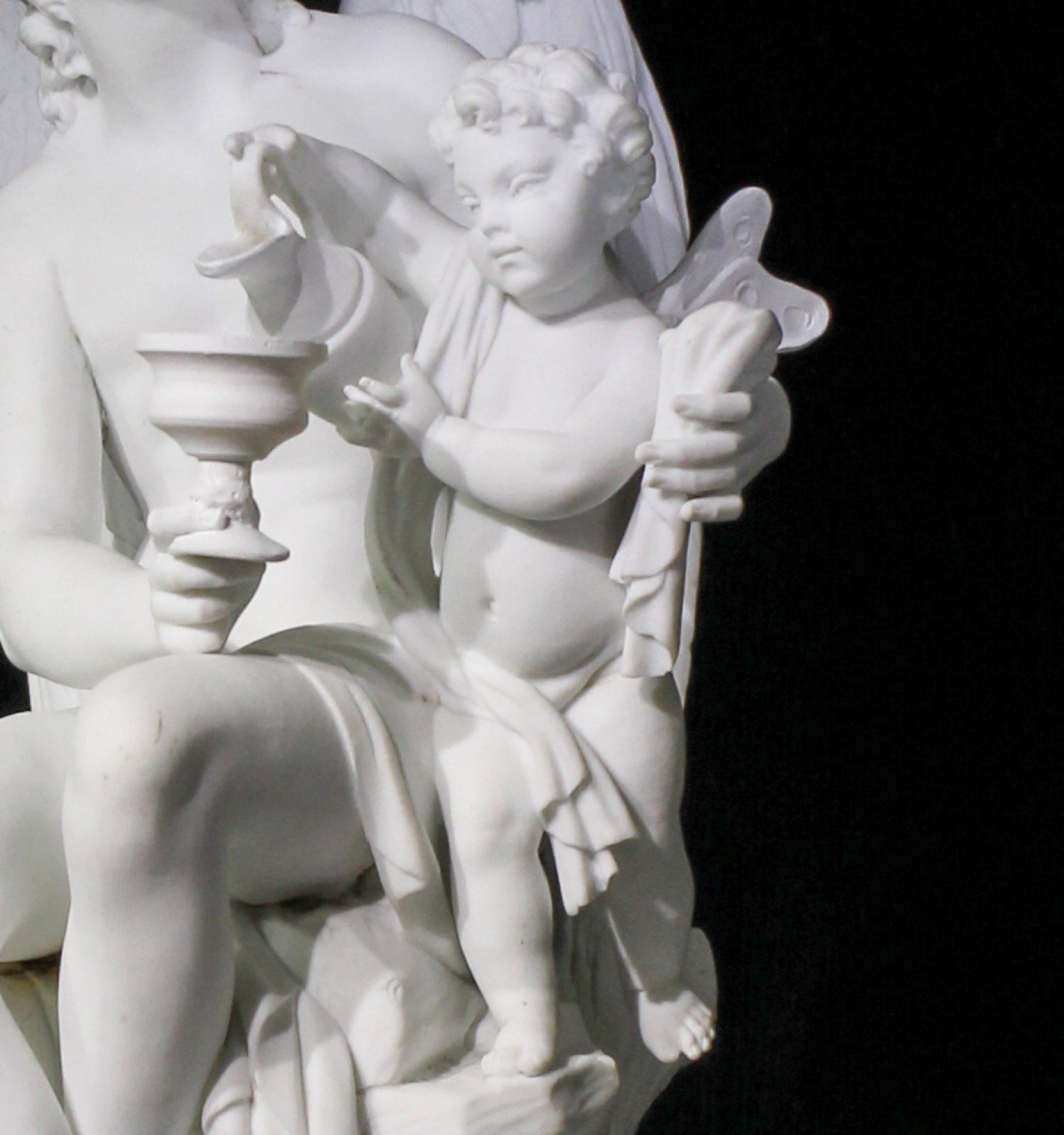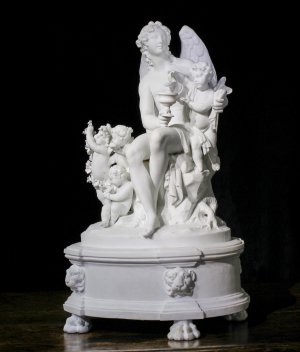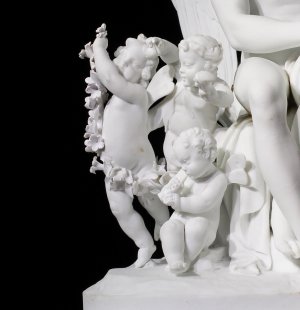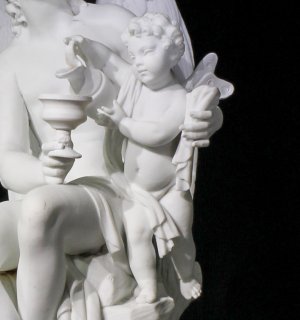Bisque figure group, 'Astraeus & the Anemoi', by Dihl et Guérhard, Paris, c.1790 circa1790 also known as Large French neo-classical sculptural group.
Items for Sale » Moorabool Antique Galleries »Description
Large French bisque porcelain group, depicting Astraeus (Dusk) with the Anemoi (his children, the four winds), modelled resting on a tree stump being served wine from a ewer by Notos, the summer wind, while Zephyr (spring) Boreas (winter) and Euros (Autumn) play to one side, each with their attributes, set on an oval grassy mound, the whole on a high architectural plinth with four lions heads and standing on lions paw feet.
Unmarked, attributed to Dihl et Guérhard, circa 1790
Comparable pieces are to be found in the Queen's collection, purchased by George III in the 1790's.
The main figure is Astraeus, or Dusk, with feathered wings, father of the Anemoi, or four winds, represented here as children.
The first figure, serving the wine, may be Notos with his water jug, representing Summer winds from the South. He is often shown pouring water from a vase.
The second, playing an instrument, matches the description of Zephyr, the Spring wind
from the West.
The third is the only one wearing clothing, with a tatty shirt across his chest; this
is surely Boreas, the cold North Wind of Winter. In his hands he holds a ‘clacker’ -
perhaps to symbolise the expected noise of thunder - and the enigmatic ‘sceptre’ with
the face.
The fourth is twisting through a garland of leaves, which we can interpret as being
Euros, the Autumn wind from the East. The twist of his body, and the flurry of leaves
that spiral around his body are a lively depiction of the twisting wind picking up fallen
leaves.
The interesting feature with these four characters is they have butterfly wings, rather
than feathers. As adult ‘winds’, they always have full birds wings - just like the main
figure here, their father Astraenus. They are represented as children, and therefore
have ‘juvenile’ wings, like butterflies - not the serious feathers of adulthood. They are
therefore depicted still earning their wings.
The Greek poet Nonnus, writing in the 5th century BC told the tale of Demeter, the
Goddess of the Harvest, coming to the house of Astraios (Astraeus). Here he relates:
“..the Aetai (Winds), the sons of Astraios, welcomed the goddess with refreshing
cups of nectar which was ready mixt in the bowl . . . The four Aetai (Winds)
fitted aprons round their waists as their father’s waiters. Euros held out the cups
by the mixing-bowl and poured in the nectar, Notos had the water ready in his
jug for the meal, Boreas brought the ambrosia and set it on the table, Zephyros
fingering the notes of the hoboy made a tune on his reeds of spring-time--a
A womanish Aetes (Wind) this!”
Price: $7,800.00
Moorabool Antique Galleries
16 - 18 Ryrie Street
Geelong VIC 3220
weekdays 10am - 4pm, Saturday 10am-2pm, Sunday CLOSED
www.moorabool.com
T: 03 5229 2970
queries@moorabool.com

